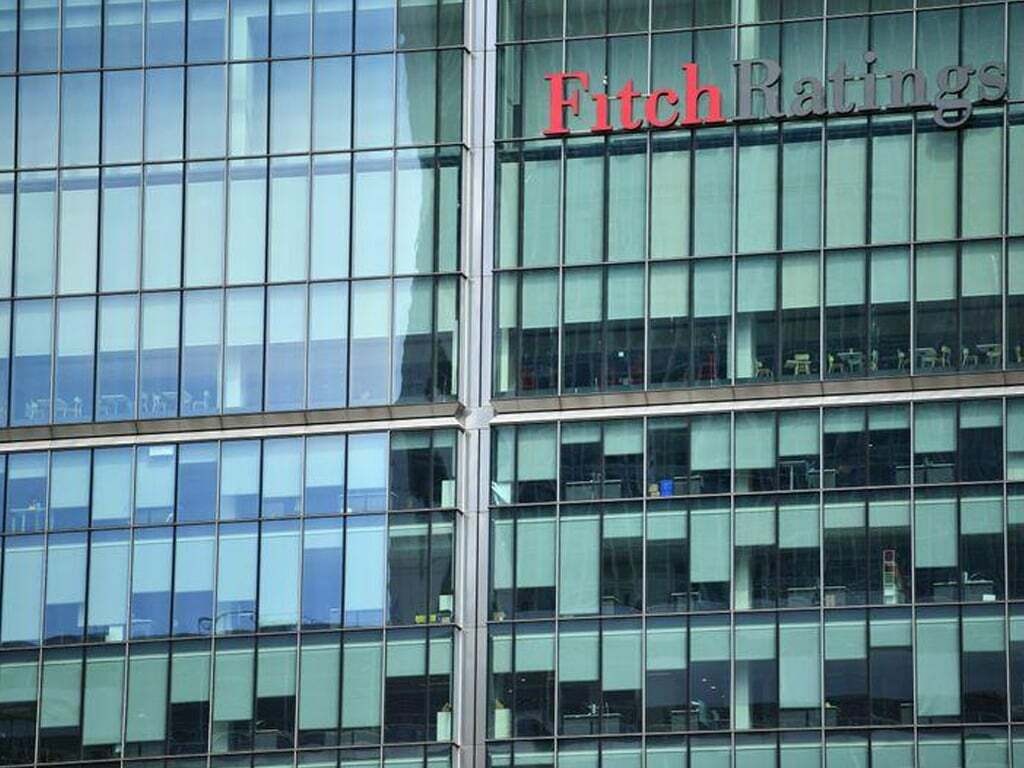Fitch downgrades Pakistan’s outlook to negative, sees 'considerable risks' to IMF programme
- Renewed political volatility could undermine authorities' fiscal and external adjustment, it says
Fitch Ratings agency on Tuesday downgraded Pakistan’s outlook from stable to negative in view of the significant deterioration in the country's external liquidity position and financing conditions since early 2022.
In a statement, the credit rating entity affirmed Long-Term Foreign-Currency (LTFC) Issuer Default Rating (IDR) at 'B-'.
Fitch cited a host of other factors behind its decision to downward revise the ratings outlook. It added that renewed political volatility could undermine the authorities' fiscal and external adjustment, as happened in early 2022 and 2018, particularly in the current environment of slowing growth and high inflation.
We forecast slower growth of 3.5% in FY23 amid fiscal and monetary tightening, high imported inflation, and a weaker external demand outlook, all of which will also hit household and business confidence: Fitch
Moody's downgrades Pakistan's outlook to negative from stable
“Pakistan's 'B-' rating reflects recurring external vulnerability, a narrow fiscal revenue base and low governance indicator scores compared with the 'B' median,” said Fitch, adding that external funding conditions and liquidity will likely improve with the new staff-level agreement.
“Former prime minister Imran Khan has called on the government to hold early elections and has been organising large-scale protests in cities around the country,” the agency pointed out. “The new government is supported by a disparate coalition of parties with only a slim majority in parliament.”
Regular elections are due in October 2023, creating the risk of policy slippage after the conclusion of the IMF programme, it added.
Fitch saw considerable risks to the implementation of the International Monetary Fund (IMF) programme and to continued access of Pakistan to financing after the programme's expiry in June 2023 in a tough economic and political climate.
Citing that Pakistan’s foreign exchange reserves were under pressure, it added that limited external funding and large current account deficits had drained the State Bank of Pakistan (SBP)-held reserves.
It argued that the SBP has used reserves to slow currency depreciation. Liquid net FX reserves at the SBP declined to about $10 billion or just over one month of current external payments by June 2022, down from about $16 billion a year earlier.
The agency estimated Pakistan’s current account deficit (CAD) to reach $17 billion (4.6% of GDP) in fiscal year ended June 2022 (FY22), driven by soaring global oil prices and a rise in non-oil imports boosted by strong private consumption.
However, measures such as fiscal tightening, higher interest rates, and moves to limit energy consumption and imports could narrow CAD to $10 billion (2.6% of GDP) in FY23, it said.
The agency shared that preliminary estimates show real GDP growth of 6% for FY22, up from 5.7% in FY21, mostly driven by private consumption, as in FY21, while net exports continued to weigh on growth.
“In our view, this largely reflected a loosening of fiscal policy in FY22, as well as a fairly loose monetary policy despite significant tightening throughout the year (ex-post real policy rates on average negative in FY22),” it said.
“We forecast slower growth of 3.5% in FY23 amid fiscal and monetary tightening, high imported inflation, and a weaker external demand outlook, all of which will also hit household and business confidence,” the agency stated.
Fitch was of the view that debt maturities of about $9 billion to bilateral creditors (chiefly Saudi Arabia and China), should be fairly easy to roll over with an IMF programme in place.
“Staff-level agreement will potentially unlock $4 billion in IMF disbursements to Pakistan in FY23, assuming board approval of a $1 billion augmentation and extension to June 2023,” it said.
The credit ratings agency said that the fiscal deficit widened to 7.5% of GDP (nearly Rs5 trillion) in FY22, from 6.1% in FY21.
“We expect a narrowing of the deficit to 5.6% of GDP (about Rs4.6 trillion or USD22 billion) in FY23, driven by spending restraint as well as by expanded taxation, including higher corporate and personal income taxes and increases in the petroleum levy. Our forecast of the fiscal deficit is about 1% of GDP wider than the authorities' target,” it said.
Moreover, Fitch estimates Pakistan's debt/GDP at 73% as at FYE22, broadly in line with the current 'B' median, which is expected to decline to 66% in FY23 and remain on a downward trend, helped by high inflation and a modest primary deficit, “which we forecast at 0.9% of GDP in FY23, down from 2.8% of GDP in FY22”.
Fitch forecast of average inflation in Pakistan of 19% in FY23 and 8% in FY24 largely reflects base effects, but recent and planned future energy price hikes will all fuel broad-based inflation and mean inflation is skewed to the upside.
Also read:
























Comments
Comments are closed.